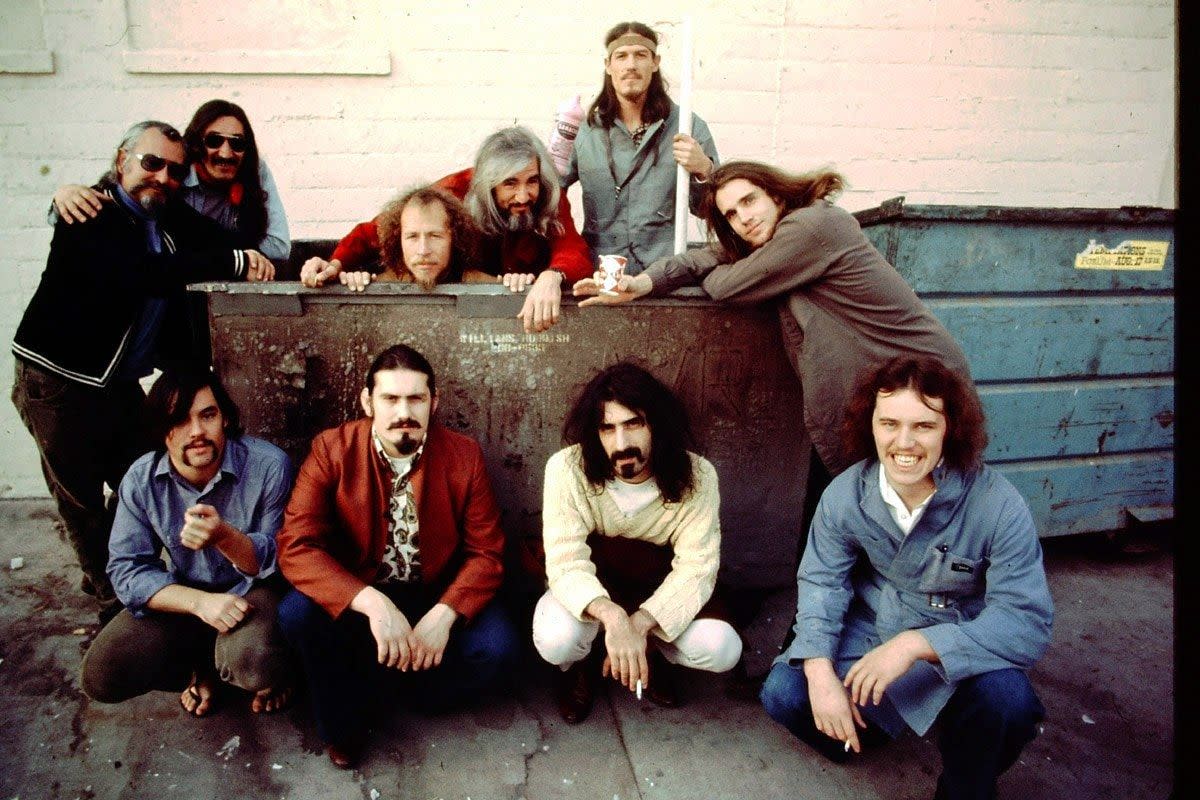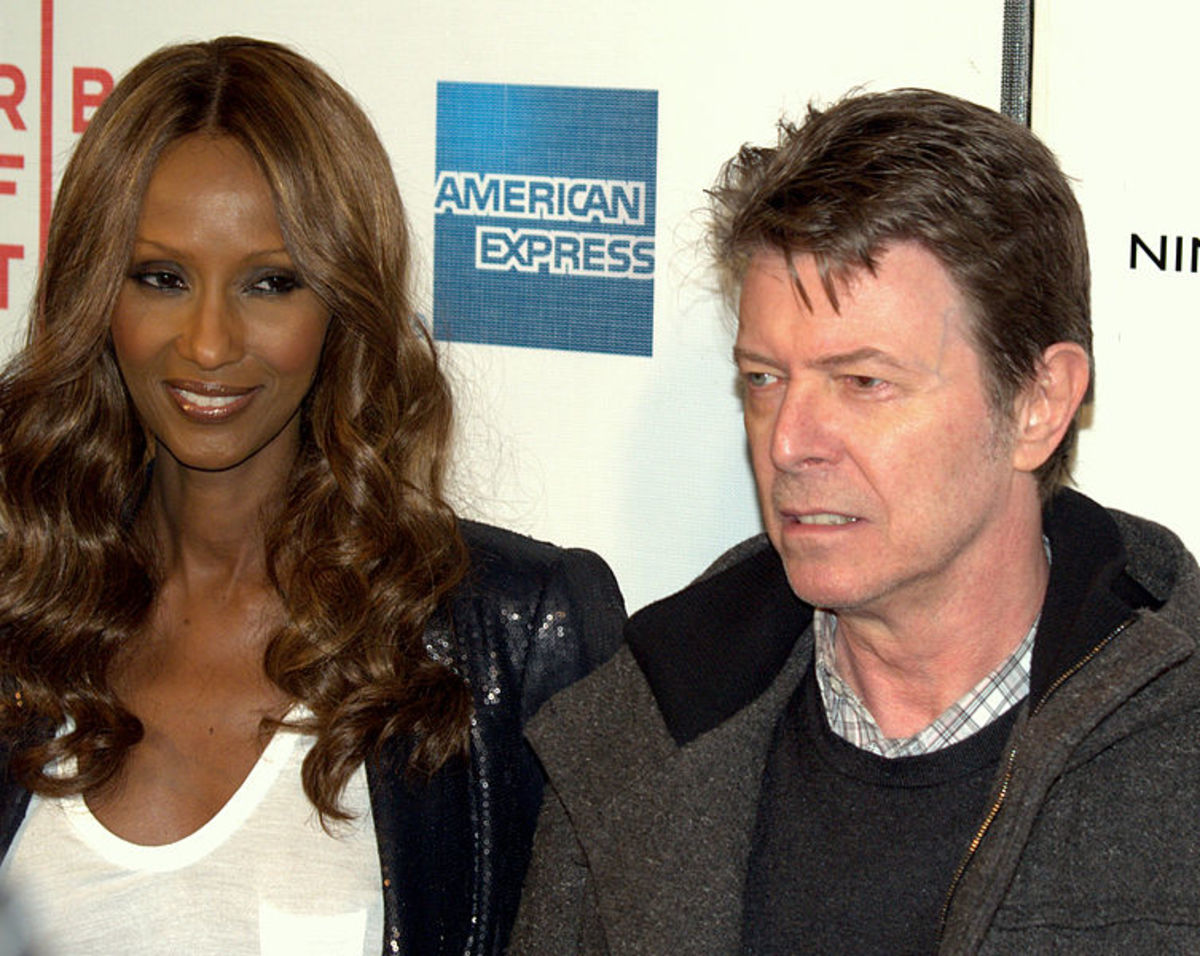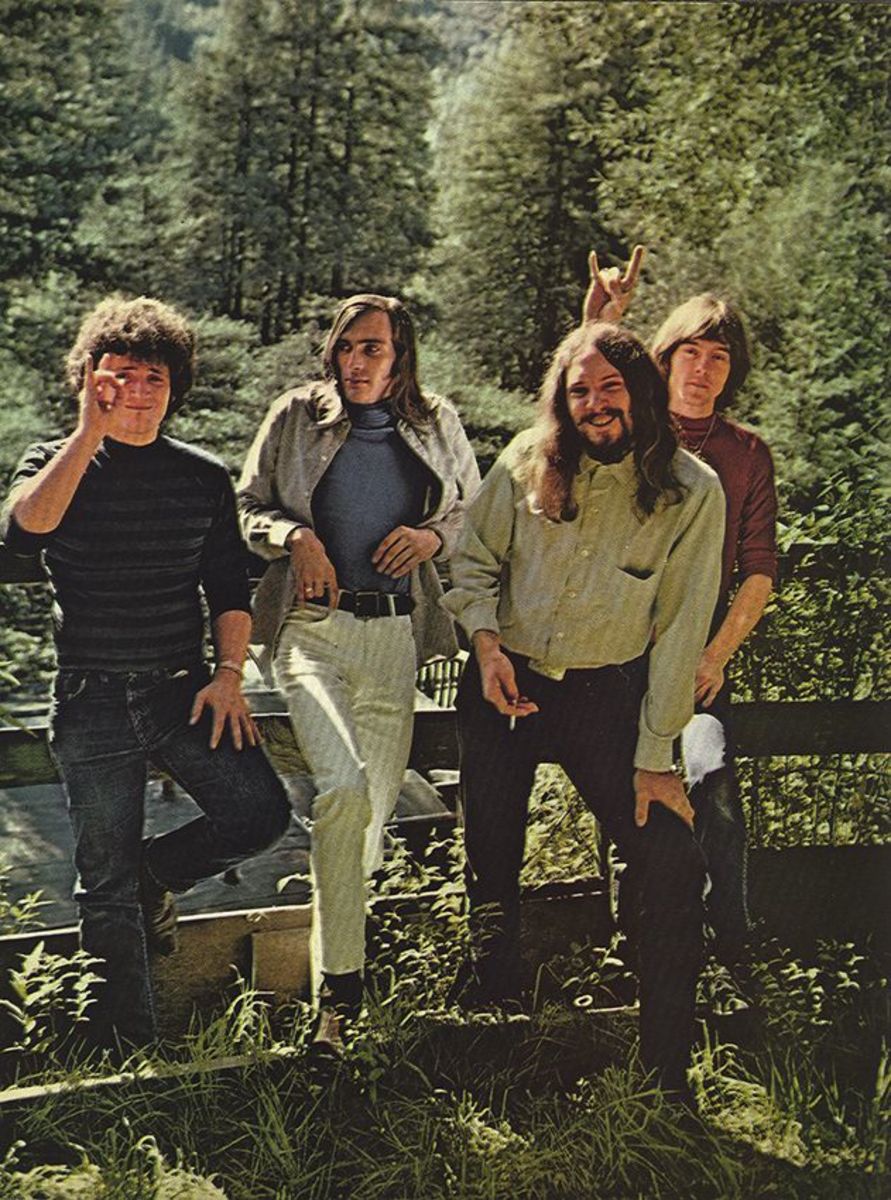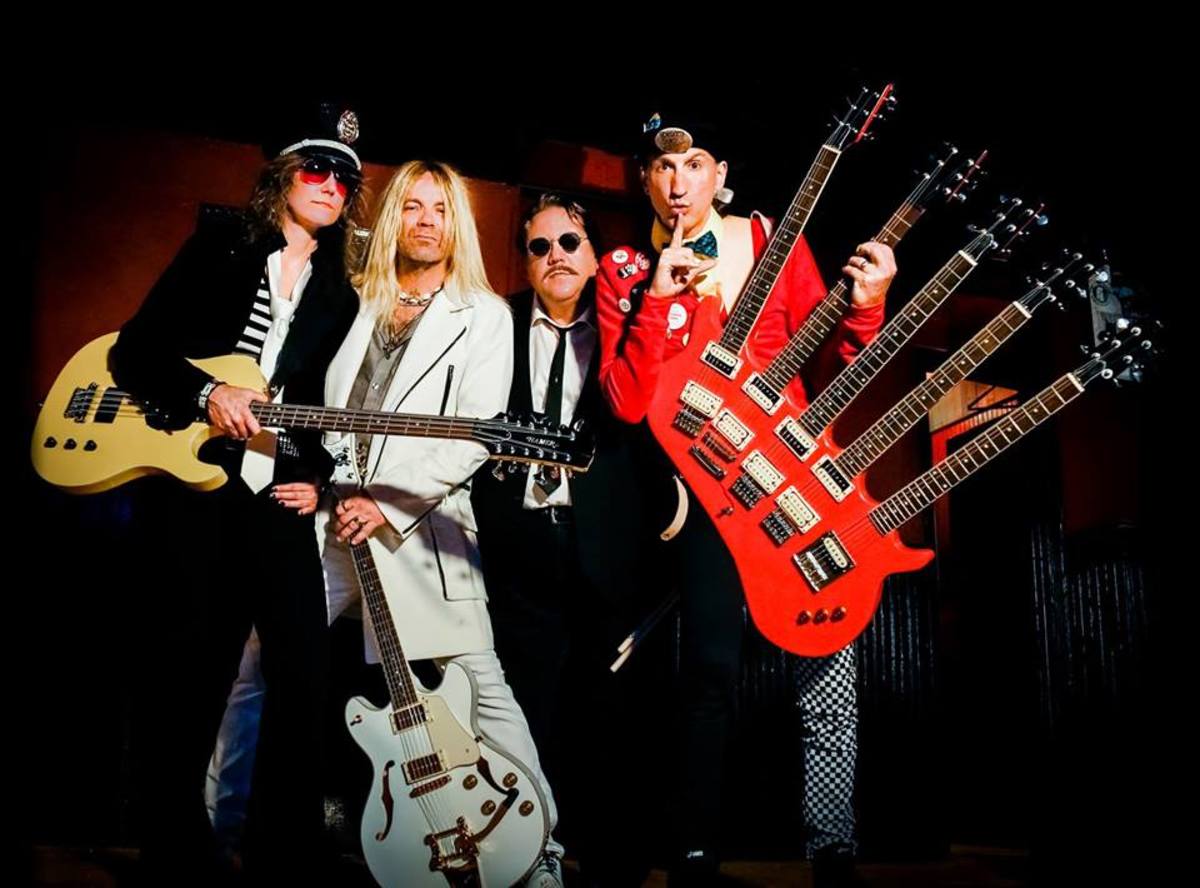Concept Album Corner - 'Aladdin Sane' by David Bowie
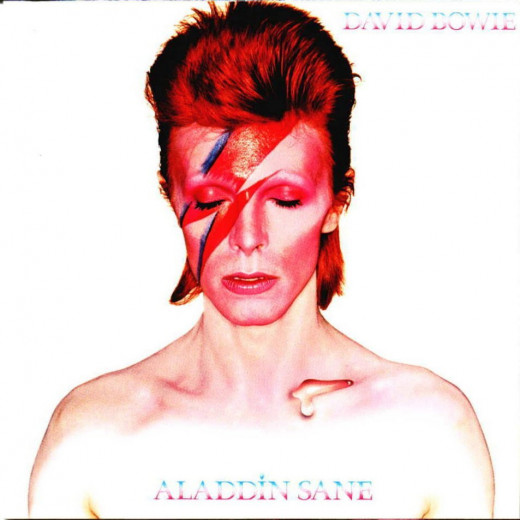
After Bowie released his widely acclaimed magnum opus, people considered him a full, bona-fide rockstar, adoring his lush and lavish performances and costumes as the character of Ziggy Stardust. During his touring in America, however, always working and writing songs behind the scenes, Bowie began to really look at America and formulate his thoughts on it. His thoughts, to sum it up, were a mix between admiration and disgust, fascination and revolting. In Bowie’s words, his conflicting feelings were rooted in “wanting to be up on the stage performing my songs, but on the other hand not really wanting to be on those buses with all those strange people.” Eventually, as all things must pass, Bowie retired the stage character of Ziggy only to adopt a new one for his new album, adopting the style and look of Ziggy in many ways save for two major elements, of musical style and of theme. Whereas Ziggy would be the ultimate alien pop rock idol, this character would be more so a schizophrenic lunatic, a punk rock icon that criticized America as much as he did adore it. Thus the album and character of Aladdin Sane was born, affectionately titled ‘Ziggy Goes To America’ by Bowie.
Ever since it’s debut in 1973, opinions of this album, much like Bowie’s thoughts on America at the time, have been mixed and conflicting. The look of Aladdin Sane, while obviously inspired by Stardust, has created Bowie’s most iconic look for his characters: a skeletal, snow-pale and androgynous young man with spiky red hair and a red lightning bolt striking down the middle of his face. As for the songs, critics have been divided ever since it’s release, some saying he was dropping low at the time, others saying he was still making masterpieces. For my own David Bowie go-to-guy, my father, who had been and still is a massive David Bowie fan, remembered not being too fond of Aladdin Sane. Naturally, I was very ambivalent going into this album. What I got instead was some of the greatest music I’ve ever heard out of Bowie.
As a quick side note relevant not only to this album but perhaps the rest of Bowie Month in general, the concepts behind his concept albums tend to vary in vagueness. In the case of something like Ziggy Stardust, not only was the concept revolving around a character’s life, but there were amazingly strong hints to a theme in each of the song, using subtext and poetry well enough to weave a continuous idea or notion of a message. From there on out, however, some of the albums that Bowie made that were considered ‘concept albums’ could contain that same level of deeper meaning to his writing, but other albums tended to be made solely for him to create stage characters to sing the songs on the album. As Bowie is a believer in ‘audience interpretation’ over ‘artistic intention’, my interpretation is that this is one of those albums. Bowie had stated that many of the songs written were influenced by ideas or thoughts that Bowie had while touring as Ziggy in America, so the concept certainly becomes a little more loose if that is the major inspiration.
1.) Watch That Man – While the first track doesn’t necessarily encompass what the overall sound of the album is like, it certainly covers a massive chunk of it. Rolling Stones, punk-inspired rock similar to that of the latter half of The Rise and Fall of Ziggy Stardust and the Spiders from Mars, the guitars sounding more like the squawk and blare of jazz horns than fiery flamboyance from the last album. The guitar licks sound as if Keith Richards himself is recording in the studio with Bowie and the band. Bowie’s vocals, at least when shouting and booming out for the party-oriented songs, has certainly improved since last time, though not that one can easily tell. In this mix of the song, Bowie’s vocals and the instruments are at the same level of volume, making his voice more of an instrument than a leading presence. The lyrics describe a party scene full of girls, drunkards, junkies, lunatics, and dancers, the leading man seeming to be Aladdin himself. Watch that man!/Oh honey, watch that man!/He walks like a jerk/but he’s only taking care of the room/Must be in tune. The scenario seemed to be heavily inspired by the drug craze of America in the seventies that was heavily prominent during Bowie’s touring.
2.) Aladdin Sane (1913, 1938, 197?) – When I said that the first track doesn’t entirely catch the overall style of the album, tracks like this one are the very reason for that. Bowie moves through a much more experimental song, combining elements of glam rock into a song that seems to be a lot like lounge-jazz, piano twinkling and all, combined with low piano thuds and guitar slides. The title of the piece is a play on words of the phrase “A Lad Insane”, not only alluding to the character, but also inspired by Bowie’s half-brother Terry, who was diagnosed as a Schizophrenic. As for the dates of years in parenthesis, each date alludes to a year before one of the World Wars, suggesting that Bowie was certain that a Third World War was coming soon in the seventies. The lyrics describe the stage presence that is Aladdin Sane, a charming, devilish rock star inspiring his fans with romance and hope. Passionate bright young things/Takes him away to war (don’t fake it)/Saddening glissando strings/ oh-oh-oh-oh-oh-oh (You’ll make it). The chorus begins to get into the glam rock aspect of the song, dancing seductively wondering just who would love a lad insane? The solo is especially fascinating as the piano takes on an avante-garde jazz scene piece of the 60’s by Mike Garson, the entire jagged, rattling, sliding and frantic piano number recorded on improvisation and in one whole take. This song is positively spellbinding.
3.) Drive In Saturday – One of Bowie’s tropes in songwriting is a thing he referred to as ‘futuristic nostalgia’, a song about somebody from the future looking back on the past. We’ve seen him cover ground with this in ‘Five Years’ from Ziggy Stardust, which probably uses futuristic nostalgia to better effect in a simpler and easier to comprehend manner, but this one I find is a much more fascinating ballad. Opening with the plink and pick of guitar strings that fade into a metallic whir, the song is a very doo-wop oriented story of a group of people in the future (supposedly 2033), where people have forgotten how reproduction works. So to remember and gain sexual arousal, the people attend a drive-in movie theater where they all watch old porn films. The lyrics are simple and slow, occasionally name-checking Mick Jagger, model Twiggy, and Carl Jung, my assumption is that each of these people are linked together by sex appeal (Carl Jung, at least, being very close to the often sexually psychological Sigmund Freud). Bowie makes great use of the hand-clapping chorus, complete with sax and synthesizers that chirp and make ‘wow’ noises all around. The song isn’t sexually arousing, I feel, but oddly good romance music, bringing to mind the image of two bare lovers wrapped in a warm, happy embrace. Although that can bring to mind arousal as well, depending on one’s tastes. It’s interesting because if one thinks about America’s taboos against pornography, this wouldn’t seem as outlandish as one might think.
4.) Panic In Detroit – Probably the best of the punk oriented songs of the album, heavily inspired by Bowie’s friend and Ziggy Stardust model Iggy Pop of The Stooges. A hard-rock and salsa variation on the typical Bo Diddley beat, the guitars blare and burn like fire once more, Bowie’s vocals accompanied by female back-up singers that waver and warble. Supposedly, the song details the revolutionaries that Iggy Pop met as a youth in Michigan, noted in the first verse: Looked a lot like Che Guevara/Drove a diesel van/Kept his gun in quiet seclusion/Such a humble man. Another interpretation argues that the song being about the 1967 Detroit Riots. Certainly, riots and panic are the major theme of this song, both of which are portrayed wonderfully through the lyrics and the screaming vocals that reek of ghostly anxiety.
5.) Cracked Actor – The next song, also hard rock, is much sleazier, perhaps the sleaziest song of the album. The opening wheeze and grunt of guitar and harmonica set us in the midst of a scene with an aging Hollywood actor and his prostitute, the focus being from the perspective of the actor. The lyrics portray the actor as completely self-absorbed but also miserable in living in his supposed Golden Years, taking out his frustration on prostitutes with the help of drugs. I’m stiff on my legend/The films that I made/Forget that I’m fifty/’Cause you just got paid. Bowie obviously has a lot of bones to pick with celebrities and America’s long-lasting ‘issue’ with the notion of sex, this track showing the more controversial and somewhat hypocritical aspects of the two. Apparently, while most social norms forbid the common man from enjoying the more carnal pleasures to the point where he forgets how to partake in it, celebrities are free to carelessly and emotionlessly take part in some of the raunchiest and even the most perverted acts possible. A very interesting idea to play around with, but sadly the song is the shortest on the album and stops too soon, I think, before Bowie could’ve gone somewhere with it.
6.) Time – Another personal favorite, simply for the absolute change of tone. We’ve gone from hard rock to avant-garde piano tunes again, this time reminiscent of a roaring 20’s Burlesque cabaret music like that of a Jacques Brel piece, echoing as though we’re inside of a theater, a very show-tuney piece. The lyrics themselves are amazingly obtuse and even a bit sleazy again. Time – He flexes like a whore/Falls wanking to the floor/His trick is you and me, boys. Soon guitar and drums bang and creep in, doing some odd crescendo of some sort that fumbles and twists and turns all around in every other direction. One of my favorite lyrics is: You are not a victim/You just scream with boredom/You are not evicting time. Some interpretations I’ve heard tie into one big idea: that in this song, ‘Time’ is personified as a fast, insane, eerie man who acts as our puppet master and controls all of the rules and regulations of our lives: His script is you and me, boys and I look at my watch, it says 9:25/I think “Oh God, I’m still alive!” indicate this idea pretty well. Just for style and ideas alone, this is one of my favorite Bowie songs of all time.
7.) The Prettiest Star – The next song, I’ll admit, doesn’t fascinate me to any great degree, at least not initially. The history of this song goes back a while, back to when Bowie was first releasing singles with his Space Oddity album. While releasing singles, Bowie wrote one song for his then wife at the time, Angela, which was this song. Apparently, he even proposed to her over the phone with this song. Much to his manager’s dismay, Bowie decided to make a single out of this little love ballad and even got Glam Rock icon Marc Bolan on to play guitar initially…up until Marc’s wife began insulting Bowie right in his face, leading to the two eventually competing for top spot as Glam Rock King of the 70’s. The initial single didn’t sell as many copies as Bowie hoped, so he decided to redo it with long-time Bowie guitarist Mick Ronson redoing Bolan’s guitar parts almost note-for-note. I’m not generally the type to enjoy love songs, even if a lyricist like Bowie is at the reigns of it, so this isn’t one of my favorite tracks on the album. However, I will say that, if this album is keeping up with themes, ‘The Prettiest Star’ could refer to shallow infatuation with a female ‘star’, the narrator idly fantasizing of being with her: One day thought it might as well be someday/You and I will rise up all the way/All because of what you are/The prettiest star.
8.) Let’s Spend The Night Together – Once again, Bowie does a cover of a song by one of the big British Invasion bands of the 60’s, The Rolling Stones, from their album Between the Buttons. The opening of this bit is pure madness, the roar of a guitar slowly zipping up higher and higher until it turns into some electrical beeping noise while the piano hammers and bangs about madly as it fades into the rhythm of the titular Stones song. Like ‘The Prettiest Star’, it is a love tune, but differs in two ways. The first being the pure energy of this piece which, for me, can save a love song for the most part. Rather than being slow and soft, this song is rambunctious and wild. Second, there is little to no room for interpretation here. Though this is generalizing, most songs from the British Invasion of the 60’s that had to do with lovers were very straight-forward and to the point. No possible double meanings, no possible subtext. That isn’t to say that this is a bad song, in fact I prefer this one over ‘The Prettiest Star’. Still, there are certainly better tracks on the album.
9.) The Jean Genie – We kick right back into the jazz inspired punk-rock, complete with harmonica and maracas that emulate the sound of a rattlesnake. Bowie once stated that the title was perhaps a pun on the name of author Jean Genet. My interpretation, once more, focuses on the eccentric and madcap lifestyle of Aladdin, as the character has been described as an Iggy Pop-like character, the song portraying a “smorgasbord of Americana”. The melody is like some kind swing and Yardbirds combination, the lyrics weird and rebellious: The Jean Genie lives on his back/The Jean Genie loves chimney stacks/He’s outrageous, he screams and he bawls/Jean Genie let yourself go! There is not an awful lot that I can say about this one outside of the amazing fun that this song brings out.
10.) Lady Grinning Soul – Once more, we come to a song almost completely unlike any of the other pop oriented songs on the album, one more love ballad, sensual and sparkly played on almost nothing but twinkling fast piano. Bowie’s vocals reach their most fascinating range in this song nearly unmatched since his song ‘Life On Mars?’, singing of a sexual encounter with the titular Lady of another Grinning Soul. She’ll come, she’ll go/She’ll lay belief on you/But she won’t stake her life on you/How can life become her point of view? It’s as if Bowie’s lyrics have manifested into the perfect dream woman. If this is somehow tied into the theme of Americana, perhaps it is the character of Aladdin’s adoration of America taken shape and form in the form of a woman named ‘Lady Grinning Soul’. This one of the most romantic Bowie songs, hands down.
Aladdin Sane, as a concept, is very much a step-down from The Rise and Fall of Ziggy Stardust and the Spiders from Mars. There is no character arc, at least not one that I can really see or that anybody could easily pick out. The songs all just seem to be musings of the character of Aladdin Sane, his thoughts taking the form of songs, rather than telling any kind of story. There doesn’t seem to be any big or strong message that Ziggy Stardust tried to get through to people. Even if there wasn’t really a message with Ziggy, there was at least a concrete idea to his character that stuck throughout the album. Aladdin is a much harder bag to figure out, as a lot of his character, down to his very design, is modeled after Ziggy, so there’s no telling where the originality begins and the copying ends. The most I got out of Aladdin was that he was something of a roguish character against the corruption of America, as opposed to Ziggy’s bright-eyed innocence that is corrupted and consumed itself.
Musically, though, I firmly believe that Aladdin Sane is the superior album. Ziggy’s music incorporated music that was, by comparison, softer and gentler, sparkling and slick. Aladdin is wild and strange, otherworldly and still amazingly human. The matter is really a case of personal tastes, but I’m much more fond of the punk rock sound of Aladdin than the light-hearted pop of Ziggy. Even the stranger songs on Aladdin draw my attention to it even more and, in fact, completely sell this album.

